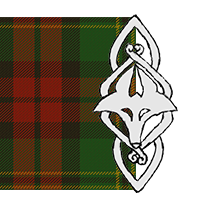Clan Martin, though best described as the “Tribe of Martin” because of its migratory history and geographic movement. The Martin name is Scotland in associated with and delineated among the historical Clan system.
Clan MacMairtin (MacMartin) is a part of the Dal Riada and the Ulaid kinship groups, the second wave of Celts into Northern Ireland and the Western Scottish Archipelagos, as well as the area of Argyle in Scotland around 500AD. The seat of the king of the Dal Riada was in Ireland until about 490 A.D. when Fergus Mor MacEarca moved to what is now Scotland. For centuries before then, however, the kings of Dal Riada exercised control from Ireland over the Dal Riada in Scotland and despite their location in what is now two countries, the people of Dal Riada were one community. Travel over the narrow channel of water that separated the two parts of Dal Riada was easier than communication over land with other parts of Ireland. The business and cultural hub of the Dal Riada in Scotland was centered around Kilmartin, also in Argyll.
Later Clan Martin ancestors can be found in the Lothian area in the 12th Century, with the Court of William the Lion.
The associations of Clan Martin in Scotland are varied. In the western parts of Scotland, the Isle of Skye, and across the Irish Sea to Antrim, there is an historical affiliation with the Great Clans Donald, Ranald, McDonnell, and MacDonald.
Farther north, with the Isles of Lewis and Skye, and parts of Ross and Cromarty, there is more of an affiliation with Clan Macleod.
The most annotated affiliation is with the Clan Camshron (Cameron). Clan MacMartin was one of four progenitors of the clan in its current form. It is unclear how Clan MacMartin lost its status as a major clan, but it is doubtful it was because of a marriage. The Dal Riada were patrilineal and it is unlikely they would give up chieftain status for what was probably an arranged agreement. Evidence indicates that the merging of the two Clans was forced after a weakened force of Martins survived the Jacobite Uprising in support of Bonnie Prince Charlie.
The Clan MacMartin were certainly Jacobite supporters. The MacMartins are said to have been amongst the most loyal and valuable followers of Lochiel. In the 1745 Jacobite uprising, the MacMartins were “out with” Lochiel’s regiment.
At the mustering of the clans at Delmacomer, early in 1689, under Dundee, the young Letterflnlay in the Grameid is described here, as it is translated into modern English. Any Martin may associate himself today with any clan that bears his name as a Sept or minor family. However, Clan Martin is not beholding to any chief and is its own Clan. There is an effort to raise the Clan to full status again. If you are interested please write to: clanmartinusa@aol.com
“Here too is MacMartin the younger, rising high above his whole line. His dark locks hang around his face and cover his cheeks, and his eyes shine like the stars, while his neck rivals the white flowers. His father and great force of Dependants accompany him, and an illustrious company of his brethren in their ranks surround him on every side. He himself, in variegated array, advances with lofty mein. The garter ribbons hanging at his leg were dyed with Corycian saffron, and with the tint of the Syrian shell, as was his plaid. The crest of his helmet glows with floating plumes, and the trappings of his mounted powder horn gleam in shining brass. His sister had embroidered his tunic with the red gold, and double line of purple went around his terrible shoulders. Mighty of limb, mighty in strength.”
